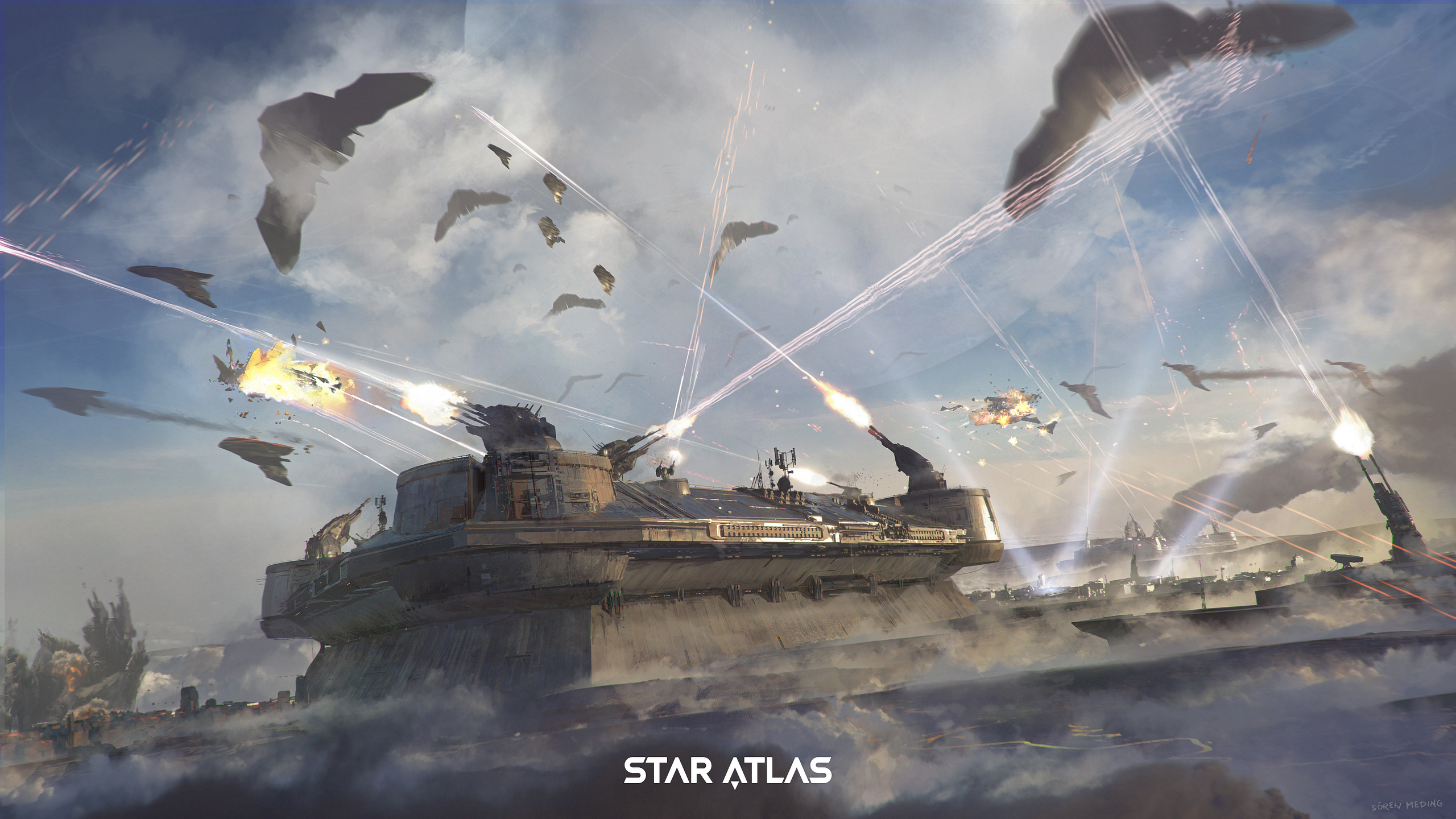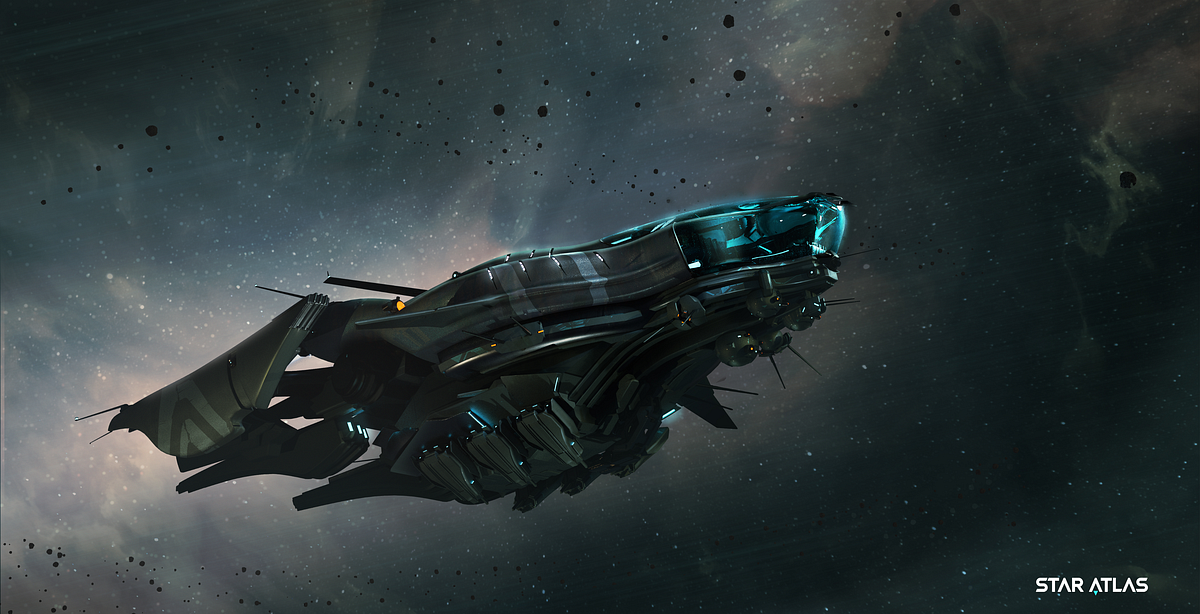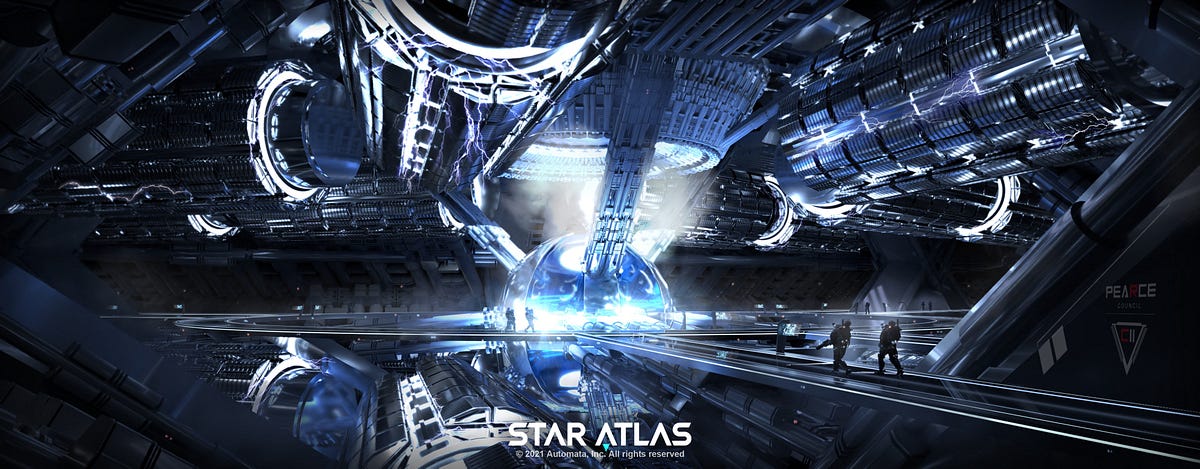Star Atlas: Possible IRL Future Value of POLIS using…Economics and Accounting 😃
Economics and a fun calculation of the potential IRL value of Star Atlas. NIA but have a read if you’d like some fun

Economics and a fun calculation of the potential IRL value of Star Atlas. NIA but have a read if you’d like some fun
I’m an avid follower of Economics. Ever since my first exposure at high school, the experience of apply concepts like ‘Rational Self Interest’ to real life has been a fun past time. Freakonomics: A Rogue Economist Explores the Hidden Side of Everything is one of my favourite books (and you should definitely have a read!)
So when a game came along promising to include an entire intergalactic economy I was hooked. Supply and demand. Governance and taxation. A transactional currency coupled with a governance token. A play to earn game with real life consequences.
Oh my!!!
My mind went (and continues to go) wild. Visions of capital markets funding expeditions to explore the galaxy filled my mind. A galactic insurance agency efficiently reducing the risk of exploring a galaxy was pretty much a guarantee in my mind. Incentive systems and taxation approaches.
In short, a petri dish of (virtual) opportunity.
It also promises to be an extraordinarily awesome game (just in case economics doesn’t fill you with as much exuberance as me 😃).
However, before I got too excited about all the in game opportunities, I thought I’d start by calculating the games Real Life Value. After all, in an efficient market, with rational self interest, that’s where I should start right?
Read on to see if you agree with my calculations 😺

For context, let’s dive into the game.
Star Atlas bills itself as a “grand strategy game of space exploration, territorial conquest, political domination and more”. Big claims.
Built on Unreal Engine 5 it’s a game which aims to combine a whole bunch of facets together. Here’s a few:
Wait. What?
Yup. Economics. How good is that!
Using the play-to-earn model, built on top of the Solana blockchain, Star Atlas has dived deep into building a functional, in-game market economy. There’s an entire economics paper devoted to it. Things like:
It’s like reading LitRPG series like Disgardium and Level Up! from Dan Sugralinov come to life.
So cool!
Let’s get into our analysis.
If you want to follow along with my calculations, here’s a link to a Google Sheet called Star Atlas POLIS Analysis. Feel free to copy it or download it :)
We’ll start by assuming that all the promises mentioned in the previous sections are implemented. This is a fair assumption, as if it’s not true, we don’t have anything to analyse.
We’ll assume that development for a full minimum viable product (MVP)takes 3 years, with full product delivery occurring at 5 years. This is a reasonable experience based upon observations about No Mans Sky — a game with a similarly extraordinary vision.
We’ll also assume a couple of other factors:
We’ll use a simple calculation method to land on the future value of our money.

Our analysis starts by looking at another popular Play To Earn (P2E) game — Axie Infinity. This game is functioning, has a large following, and includes many elements which are similar to Star Atlas, although less sophisticated. It’s a useful place to start because it demonstrates that there is a market for this type of game, and it appears sustainable so far.
In 2021, Axie Inifinity hit a maximum market cap of $10 billion USD. We’ll use this as the starting value for Star Atlas.
Using our baseline assumptions, we can easily calculate that if Star Atlas is just as popular as Axie Infinity, it will be worth between $11.7 billion USD and $12.67 billion USD in 2029.
Solid, but not amazing. It would leave us with a token value of $32.55 USD each.
According to a recent report, the Compound Annual Growth Rate (CAGR) of the Video Game Market is 14.5% per annum. It’s projected to be this way until 2026, and starts from a baseline of $155.9 USD billion in 2019.
There’s no reason to think that growth will slow at that point. The report includes allowances for the impact of COVID19, during which gaming increased dramatically.
The report isn’t clear if this includes allowance for inflation, so we’ll do both, leaving us with:
Yay for compounding growth!!!
If the game stays as relatively popular in the market as AXS, it will be worth ~36.33 billion USD in 2029
That’s right. As a taxation mechanism for the game, along with rights vote, it’s easy to see that POLIS will generate some form of revenue (that’s not including staking mechanisms).
This isn’t captured in our numbers yet, so let’s add it in.
We’ll derive a maximum and minimum amount of projected revenue. We’ll also assume that all revenue returns are returned back into POLIS tokens monthly in the form of purchasing new POLIS tokens.
Here’s our values:
Let’s put in some numbers.
We’ll assume a starting point of 1000 tokens. Using our same compounding formula, but this time returning a number of tokens rather than a $$$ figure we can calculate that we would have the following:
We’ve already established that each token would be worth ~$82 in 2029 (conservatively), so this would mean our total token value would be:
Bet everyone reading this is REALLY hoping for the reasonable return!
Here’s a quick pic from the game to break it up 🚀

By now I’m sure you’re asking yourself an obvious question.
What if it’s a way better game than Axie Infinity?
I’m glad you asked. Let’s drop that in our calculations.
We’ll assume that the coolness factor won’t be apparent until year 3 (MVP), and that it will be 50% cooler than year 3 by year 5 (full release).
I.e. if the game is 10% cooler in year 3, it will be 15% cooler by year 5.
We’ll also assume that the coolness factor will be reflected in our POLIS. This is a reasonable assumption, because if the game is cooler, there’ll be more demand, which will increase the price. We’ll also assume that all the number of POLIS won’t increase, so the effects will be fully reflected in the POLIS price.
We’ll set our value of More Cool Than Other Games (MCTOG) to be 10% in year 3. This is reasonable, as no matter how cool Star Atlas is, in three years it is almost inevitable that there will several competitors in the market with equivalent products. The barriers to entry, while high, are countered by significant amounts of capital and talent available.
In the spreadsheet you’ll see that I’ve staged the calculations accordingly.
Here’s the numbers: $90.4 billion USD, with a per token value of $251.10.
Pretty cool hey!
So we’ve got it out there. We’ve calculated a possible future value IRL for Star Atlas.
What does that mean?
Right now, at the time of publishing, the value of POLIS is $3.52 USD. You can check the latest price on CoinMarket Cap here.
If the calculations I’ve outlined above are correct (and there’s absolutely no guarantee they are), if you invested $1000 USD today, and we had a conservative CAGR, reasonable return and all other things equal, you would end up with ~$96,000 USD in 2029.
Boom.
Also, if you want to try playing around with the values and modelling different scenarios, feel free to use the spreadsheet.
I hope you enjoyed reading this as much as I enjoyed writing it!
If you’re keen to get involved in the game economics, join the Discord channel and say hello. Myself and a few friends generally hand out in the economics channel and we’d love to say hi.
Until then,
Ciao 😄